The previous article proposes the use of net energy system specific for gestating and lactating sows. The following article presents the results that support the proposed system.
Results confirm need for net energy gestation and net energy lactation

To investigate the merit of the concept as shown in Figure 1, an experiment was conducted comparing the digestibility in growing pigs with digestibility in gestating and lactating sows for 12 diets differing in fibre (NDF) content (Muley, Nutreco R&D, 2012). In the trial, 72 growing pigs, 96 gestating sows and 96 lactating sows were individually housed, and their digestibility was determined. The diets were designed to have four different levels of soluble non-starch polysaccharides (SNSP) with, within each level, an increasing amount of non-soluble NDF, leading to an increase in total NSP. The design of the fibre content of the diets is shown in Figure 2. Figure 3 shows the results of the energy digestibility (DE) of the 12 diets for growing pigs, lactating and gestating sows. The DE was significantly higher (P<0.05) for lactating and gestating sows, with the difference showing a tendency to increase as the fibre content of the diet increased. This shows that digestibility of the same diets is indeed higher for gestating and lactating sows than it is for growing pigs. There is a numerical trend for the energy digestibility of lactating sows to be slightly lower than that of gestating sows, which is consistent with their higher feed intake (4.5 versus 2.7 kg DM/d). To validate our concept, data on sow digestibility of individual raw materials (based on data from INRA; Sauvant et al., 2004) were analyzed. NSP digestibility for individual raw materials in the database was recalculated, based on the digestibility of protein and organic matter as given by Sauvant et al. (2004), assuming complete digestibility of fat and starch. Figure 4 shows the relationship between estimated NSP digestibility for sows and growing pigs. This supports our concept that highly digestible fibre is digested equally well by both, and that medium digestible fibre is better digestible in sows. Figure 4 does not have sufficient data points at the lower range of digestibility to truly validate that low digestible fibre is digested equally poorly in both growing pigs and sows.
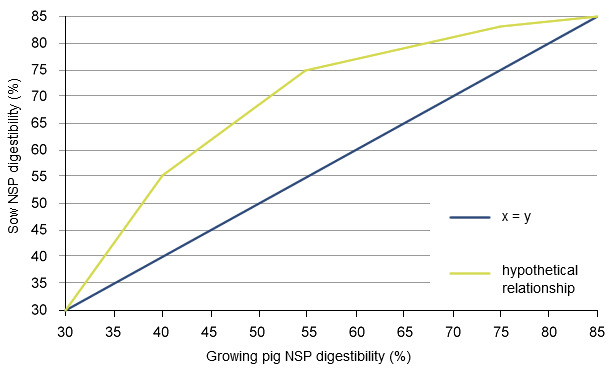
Figure 1. Hypothetical relationship between non-starch polysaccharides (NSP) digestibility of growing pigs and sows.
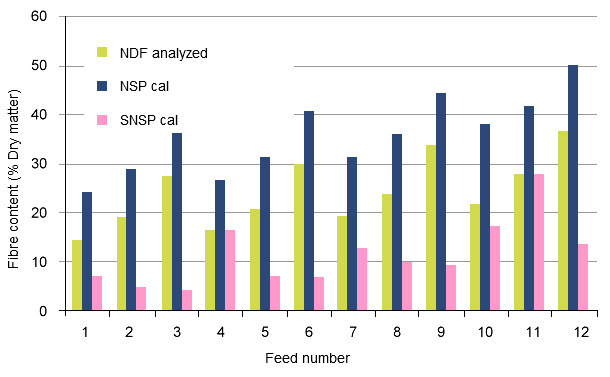
Figure 2. Design of the fibre components (Neutral detergent fibre (NDF), Non-Starch Polysaccharides (NSP) and soluble Non-Starch Polysaccharides (SNSP)) in the experimental diets comparing digestion in growing pigs and sows.
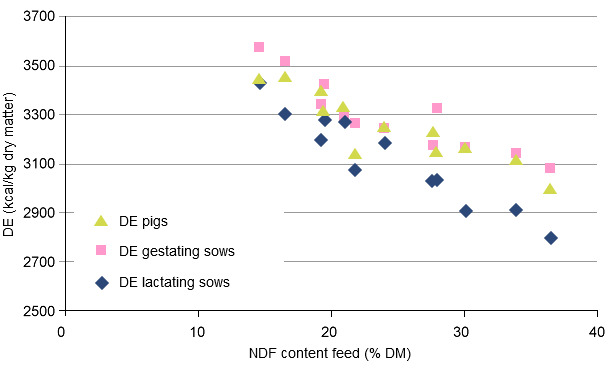
Figure 3. Relationship between neutral detergent fibre (NDF) content of the experimental feeds and measured digestible energy (DE) content of the feed for growing pigs, gestating and lactating sows.
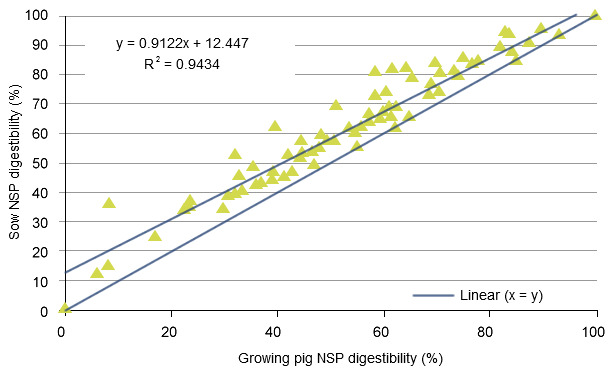
Figure 4. Relationship between calculated digestibility of non-starch polysaccharides (NSP) for sows and growing pigs based on INRA database (Sauvant et al., 2004)

In conclusion, both our trial and reprocessed Sauvant et al. (2004) data support the concept as shown in Figure 1. It was therefore decided to develop equations for the prediction of digestibility of NSP and protein for gestating and lactating sows, based on growing pig digestibility. These equations were used, together with the already existing equations for NE, to calculate NE values for lactating and gestating sows. Although the NSP digestibility for lactating sows in our research was numerically lower compared to gestating sows, a separate NE lactation was developed due to the importance of energy intake for sows during lactation.
Independent databases confirm validity energy systems for sows
In order to validate the predicted digestibility of sows based on digestibility in pigs, digestible energy (DE) values calculated with the equations developed were compared with measured DE values. Measured DE values were obtained from a previous own trial (Van Hees et al., 2005). Figure 5 shows the comparison of estimated DE values and measured DE values in sows for different feed ingredients. In general, it can be concluded that the overall relationship between estimated and measured DE values is good (R2=0.86).
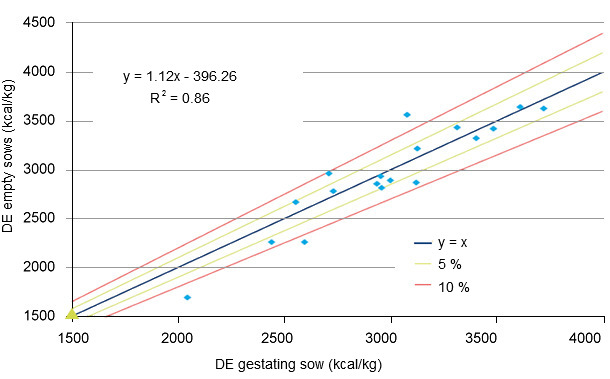
Figure 5. Comparison of digestible energy (DE) determined in empty sows (Van Hees et al, 2005) with DE for gestating sows as calculated with new equations.
Using net energy in formulation
Based on raw-material prices in the last year, we calculated the difference between NE pigs and NE lactation (Figure 6) when lactation diets are formulated on 2250 and 2450 kcal NE/kg, respectively. Our results show that the difference between NE pigs and NE lactation is around 50 kcal for both medium and high energy lactation diets, and confirmed that we had to increase the minimum energy bound with 50 kcal for medium and high energy lactation diets in our sow feed recommendations when using the NE lactation.


Figure 6. Comparison between net energy (NE) for lactating sows and pigs in time; diets formulated on 2250 and 2450 kcal/kg diet for medium and high energy lactating diets.
Conclusion
We have developed and validated a new concept for NET energy for gestating and lactating sows. Using the new NET energy system for gestating and lactating sows, a smooth transition from gestation to lactation diets can be achieved with the benefits of the positive effects of increasing dietary fibre levels on sow performance.



